The stunning beauty of the Pallars of Catalunya, a remote and seldom visited natural treasure !
As the night fell at the feet of the high mountains of the Parc National d’Aigüestortes, I can hear the drumbeat of rain pounding on the roof of my car. A never ending variation between subtle and tumultuous, either reassuring or worrisome, imposing on me its tormented symphony as I lay inside, tucked in my sleeping bag.
When I wake up the clouds are gone, revealing the surrounding summits now covered in snow. Yet, it’s hard to tell who will rule the sky today; This timid shade of blue now appearing over the valley, warming my morning routine thanks to a few sun rays, or the fog of the river below and its cloudy friends, ready to roll back at any time for another round of rain ?
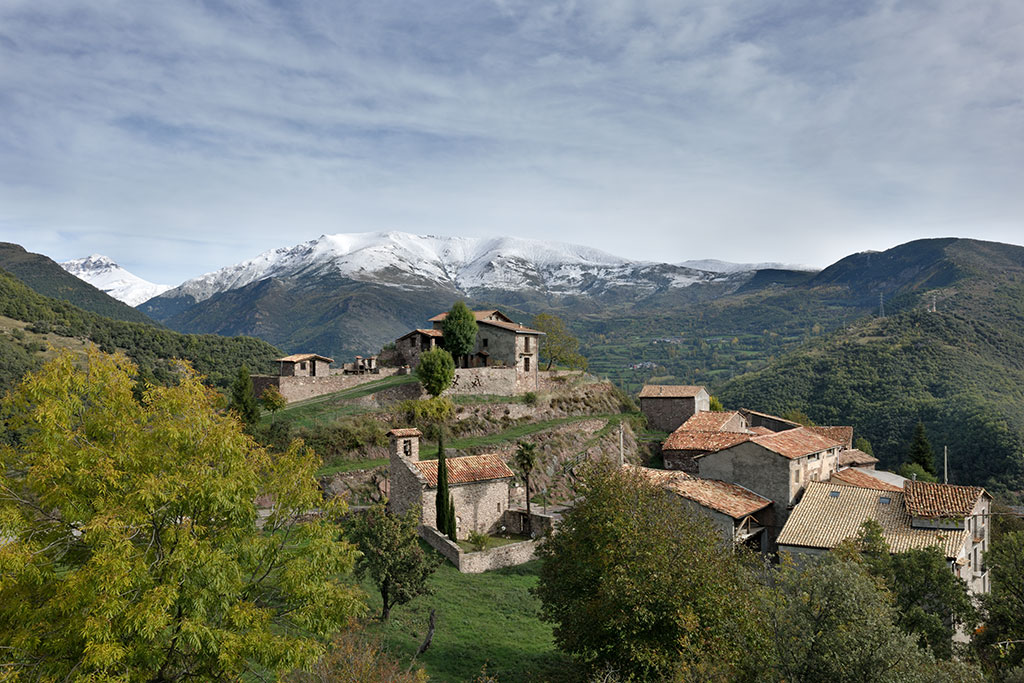
I will spend my day exploring the Pallars; the Pallars Jussià mainly, and some parts of the Pallars Sobirà. A territory surrounding the Noguéra Palharesa river I first saw yesterday. For now, I stand at the top of Vall Fosca, which could be translated to the “somber”, or “dark” valley, near the village of Cabdella and its hydrological power plant (one of the first of its kind). Ironically, it is where electricity was first introduced to Spain in 1914, bringing light to this entire “somber” valley. It should have been called the Valley of Lights instead. Or the Red Valley, as the rocks and the earth here have this unique reddish color, I could compare to the one I have seen before in some parts of New Mexico.
On my right, Serrat de les Marrades, now fading in new formed clouds. A muddy “pista”, climbs through a dense forest of beech and pines, mixing bright yellows and deeper shades of greens. On the other side, the sleepy Vall Ancs, and its abandoned villages.
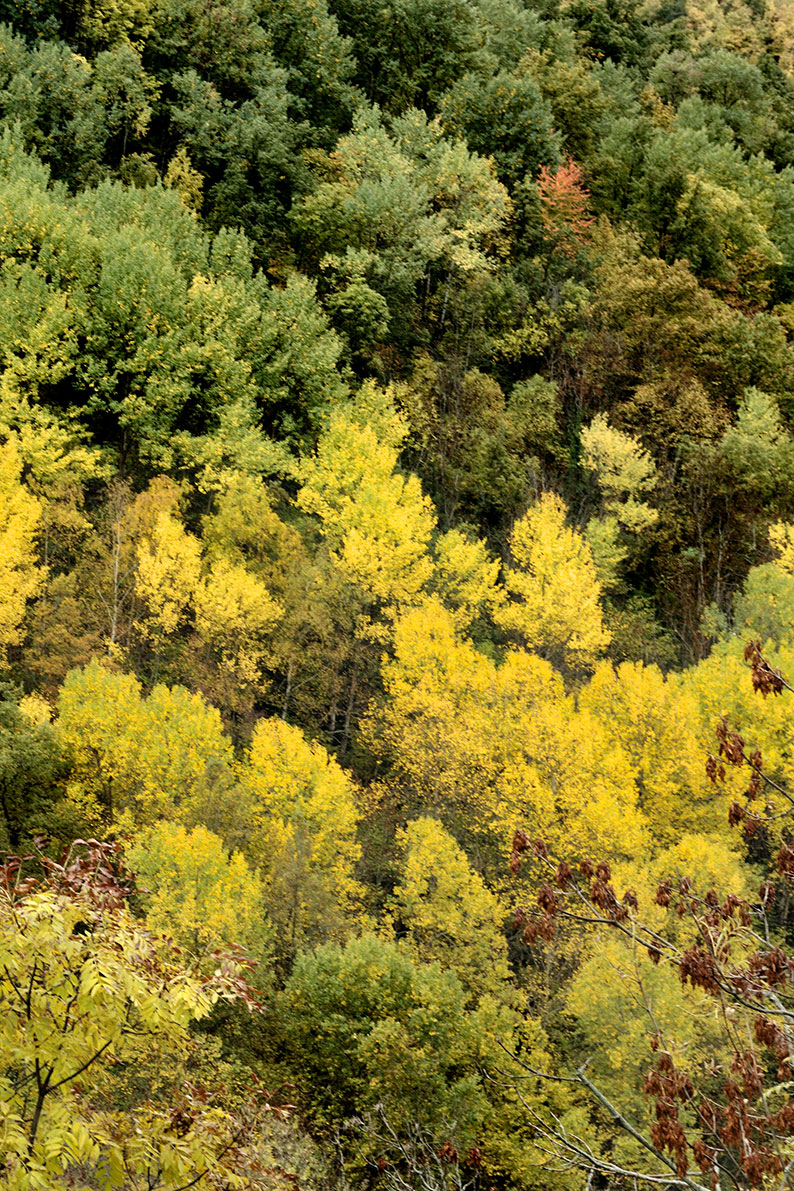
A no man’s land, like many parts of the region, since the collapse of the local pastorale economy. In the 1960’s, the last inhabitants gave up on their hardships, and moved down to towns like Tremp or Sort, in hope of a better life.
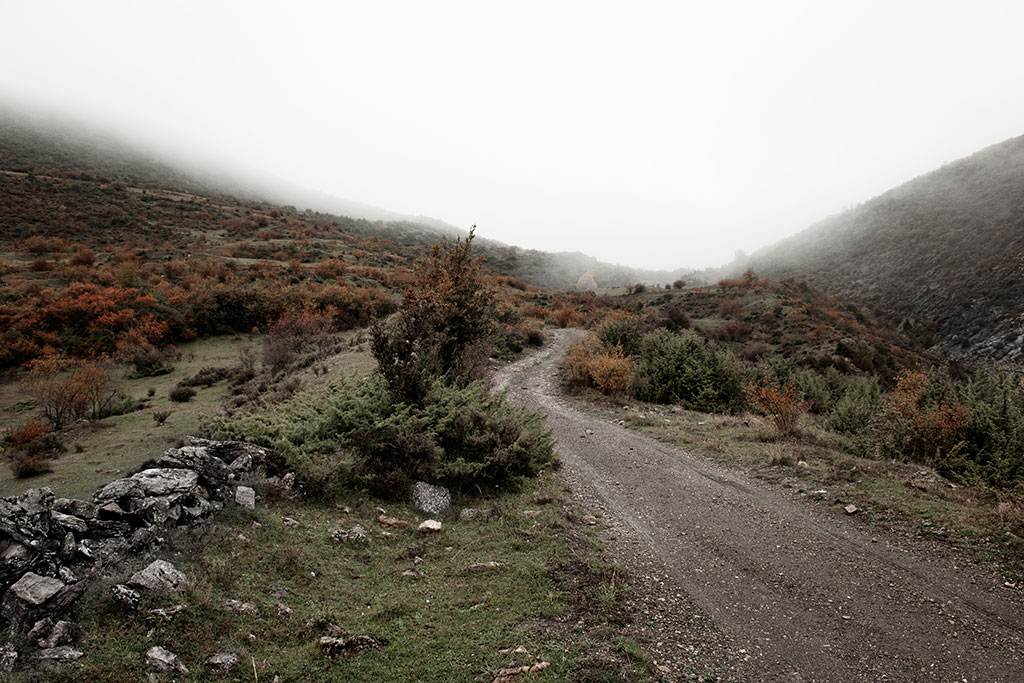
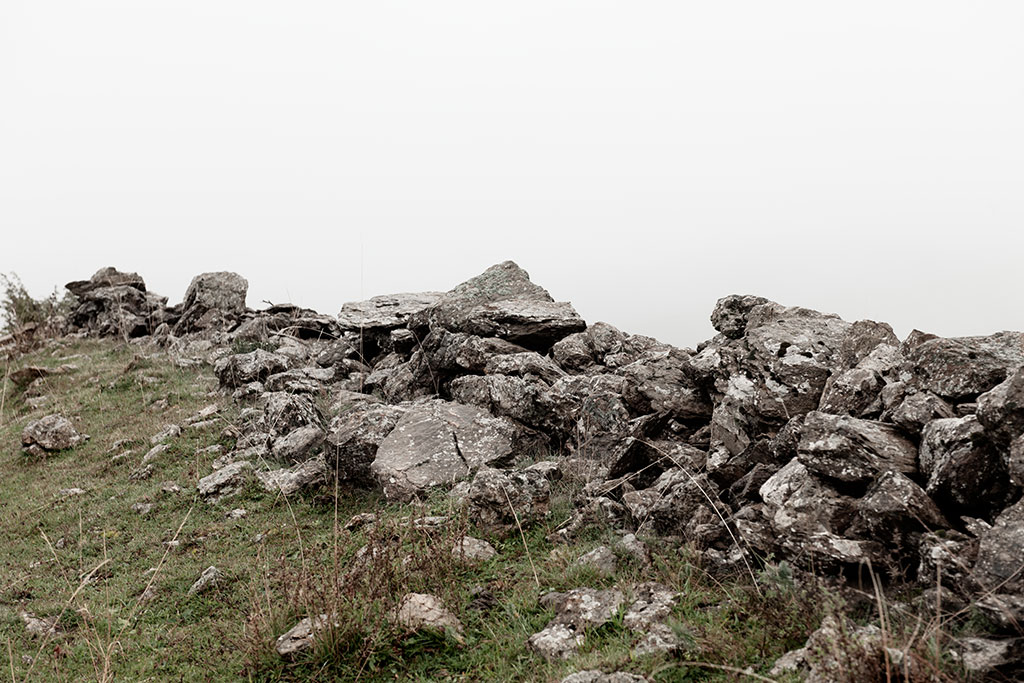
Remaining, “Se Vende” signs hanging on derelict houses without much hope. Personally I would love to live here. But I find shocking the prices of those houses. Complete ruins; some without a roof, with trees growing inside, no land, no water or electricity, nothing but a bunch of dry rocks barely holding on – 65.000 € ! Expansive rocks shall we say!
Soon after Arriù Ancs meets up with Arriù Noguéra Palharesa, stands the Collegats gorges, where the river cuts its way through the Queralts rocks, creating a stunning canyon in the old limestone formation. 5 kms long, it offers great climbing, rafting, canyoning opportunities for the daring souls. It is said to have inspired artists like Gaudi, la Roca de l’Argenteria in particular, where water streams out of the rock to drip down the river below.
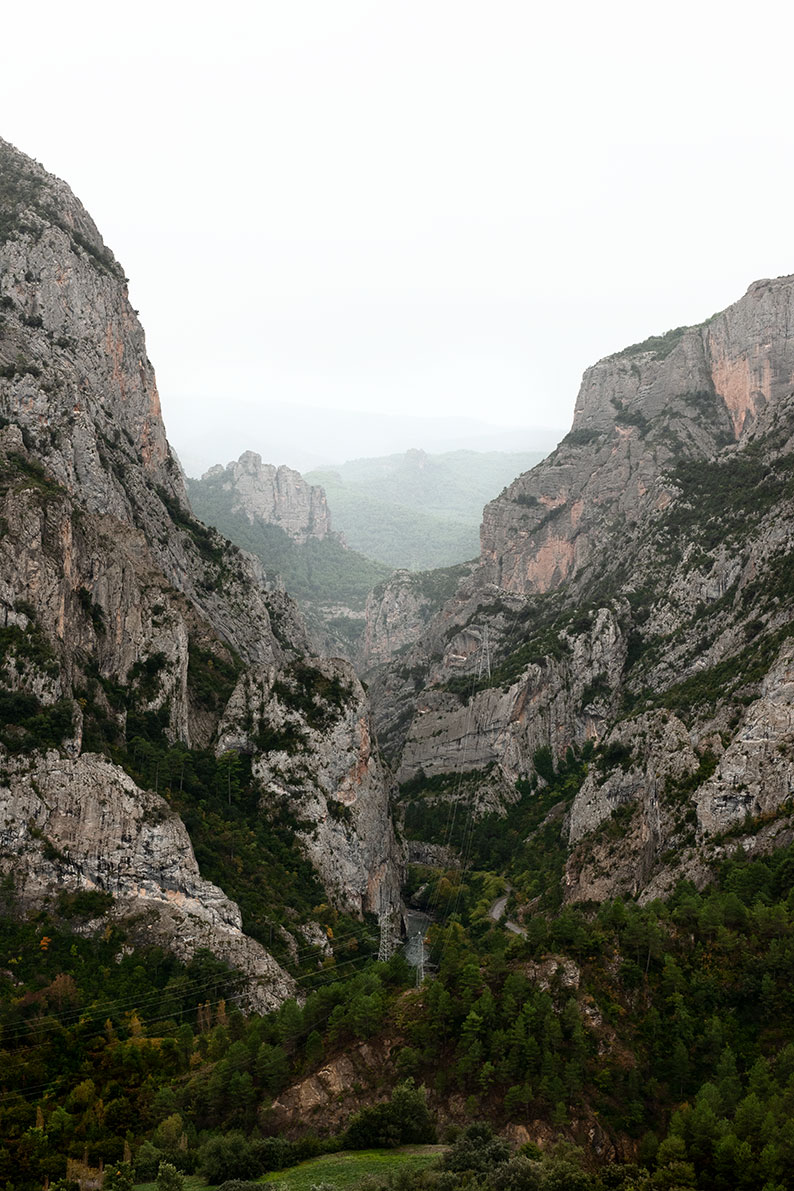
On the other side is La Puebla de Segur, where everything is closed as I arrive, except local bars. Locals are on a different schedule than most of us. They take a long brake at mid day. Call it a siesta if you will, re-opening around 4 pm. Then stay open till diner, which is commonly served around 10 pm. The menu is rustic, and despite my vegan taste, I settle for the local delicatessen, “Xolis” and “Girella”.

signs of political revolt can be found everywhere in Catalunya. You don’t have to speak the language to understand their desire for independence.
The other thing you notice, here, and in every other town or village of Catalunya, no matter how remote or deserted it may be, are the signs of political revolt.
Catalunya wants its independence ! Yellow ribbons hanging from every tree, lamp post, guardrail… Local flags floating from every balcony… Banners on walls, including city halls, requesting freedom from the oppressor, in this case the Spanish federal government… Tags of protestations… the message is very clear, even if you don’t speak the language !
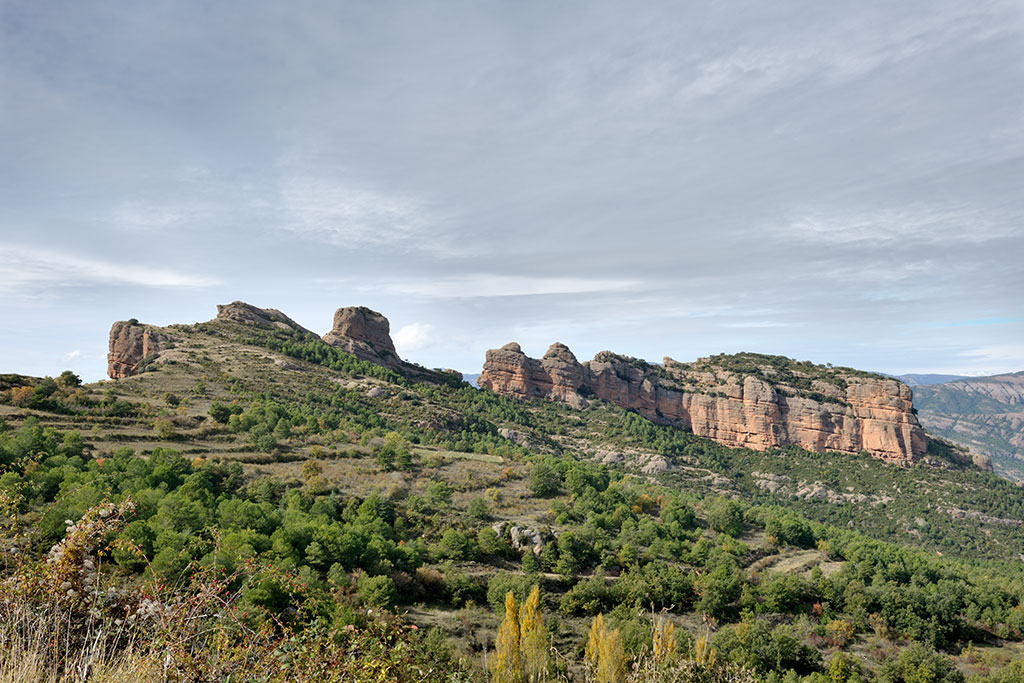
My afternoon is spent roaming through the Sierra de Boumort. This area is a preserved hunting reverse. I am a bit confused because I have read, notably on the excellent “Carnet de Traverse” blog, that the area is restricted and can only be accessed with a guide, yet here I am driving through, maybe “uninvited”. Thank to last night episode it is now covered with snow, which I wasn’t prepared for. On the positive side, it helps noticing the wildlife more easily… Elks, deers, boars, a fox and three large eagles will appear in front of my eyes just for a brief moment of joy (at least for me, even though I must admit that boar scared the crap out of me, when he rushed out of nowhere in front of my car, and forced me to break hard on a very slippery icy snow ! )
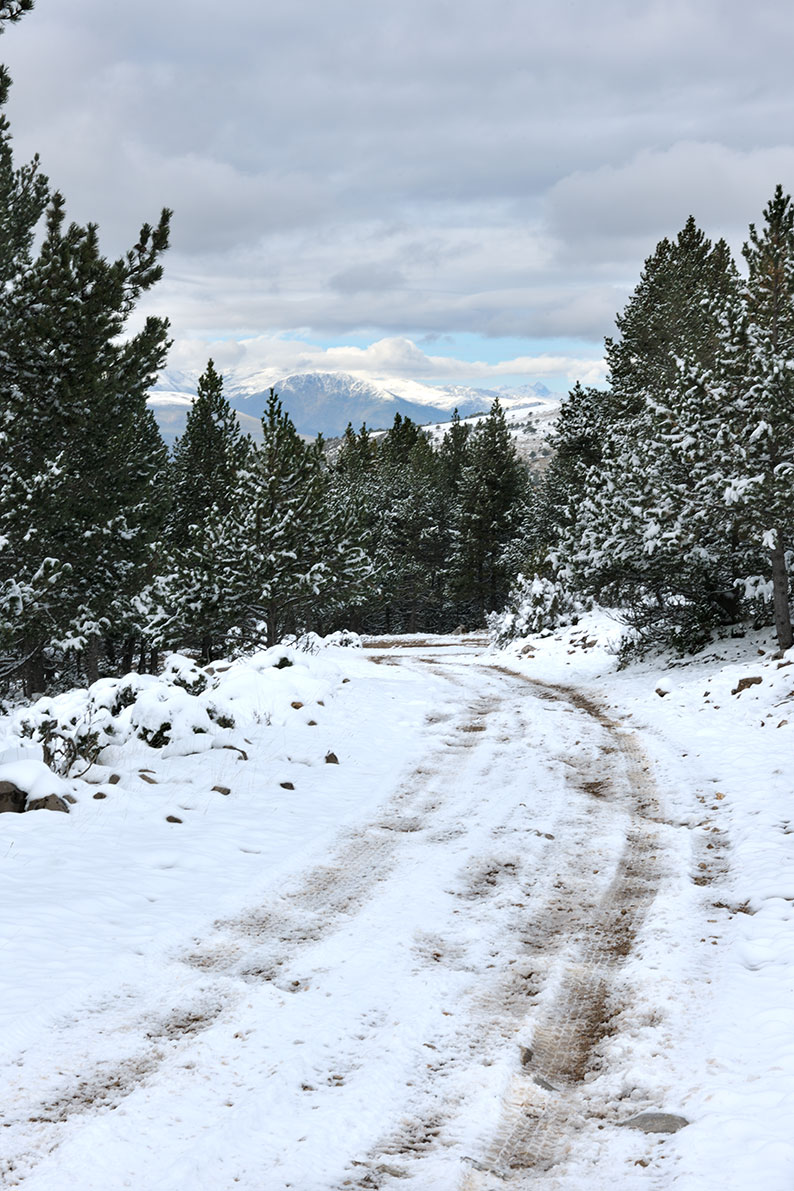
As I enter Tremp that evening, my car is covered with mud and ice, which makes the gas attendant at the local Repsol station smile. I’m in a “Defender” country, where people often drive those remote tracks, either for work or leisure. I should wash it, but it’s probably going to rain again and that will be my “pre-wash” until tomorrow morning. For now I must find a decent place to eat and sleep. And against all odds, I find a Vegan bar, Berraco, to recharge my batteries ethically !!
I ended up spending more than one night in Tremp, as a heavy rain drenched the area for three days, turning everything into dull, and transformed every track around into deep mud. Permuting between Berraco and another bar called Llac Negra next door, I rested watching local tv stations talk about the weather, while enjoying local specialties.
When they finally claimed the sun was on its way, I repacked my stuffs and headed back for the trails. What a mess ! I don’t like mud. It’s tricky to drive through and wears out many car components. Not only that, but having to get out of the car to check on what lays ahead, to make sure you can safely drive through, and your shoes and pants are also good for a thorough wash !
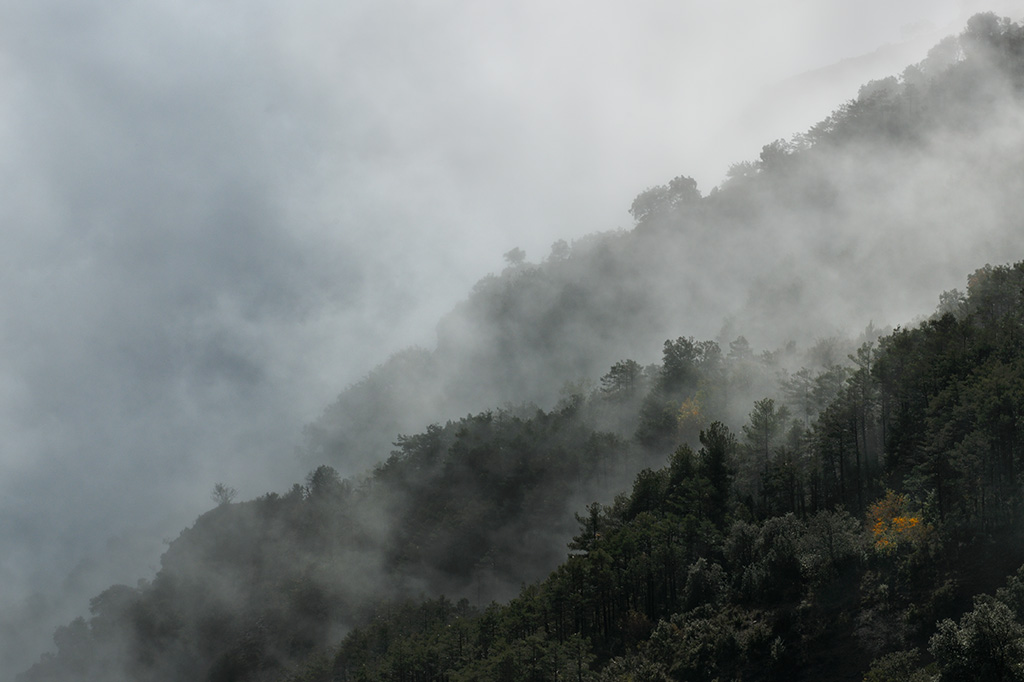
The sun is slow to rise. Instead fog begins to roll, again blocking the view on the valley below. Vineyards transpire here and there, until I arrive at a road block. A bunch of rocks fallen from the side “cliff””. Turn around ? Try to move them ? Why not, I have bought and brought enough tools to manage that sort of troubles, now is the time to see if my investment is worth it and if I am capable. It takes me half an hour, to break down the rocks into small enough pieces to be moved to the side. Proud of myself, but covered with mud, I re-enter my car, now free to go.
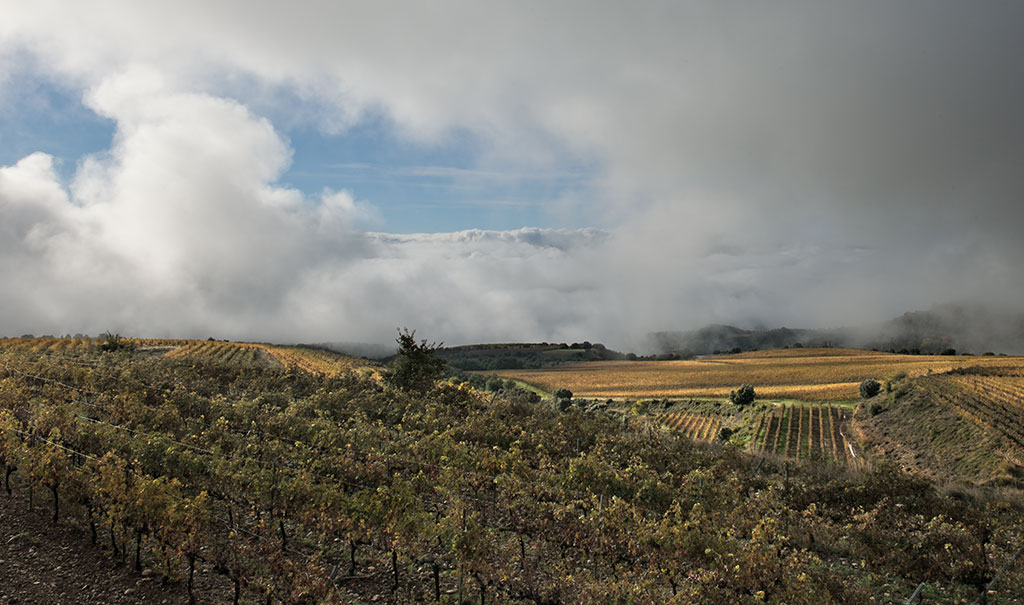
As a reward, (I am tempted to say), two bold vultures grant me of their presence shortly after. They rest quietly on a rocky outcrop above, while surveying the surroundings. I grab my binoculars, and quietly observe them for a few minutes until the fog makes them disappear completely. What I haven’t realized yet, thanks to the fog, is that I am now in what is called Vulture Valley. A glacial valley on the edge between Catalunya and Aragon were vultures have settled “en masse”.

Unfortunately, as I reach the abandoned village of Claramunt, another, this time massive, rock, or should I even say boulder, is blocking my way again. No escape this time, it’s as big as my car. No other solution than turning around and finding a new “escape”. What at first seems to be a problem, turns out to be a blessing.
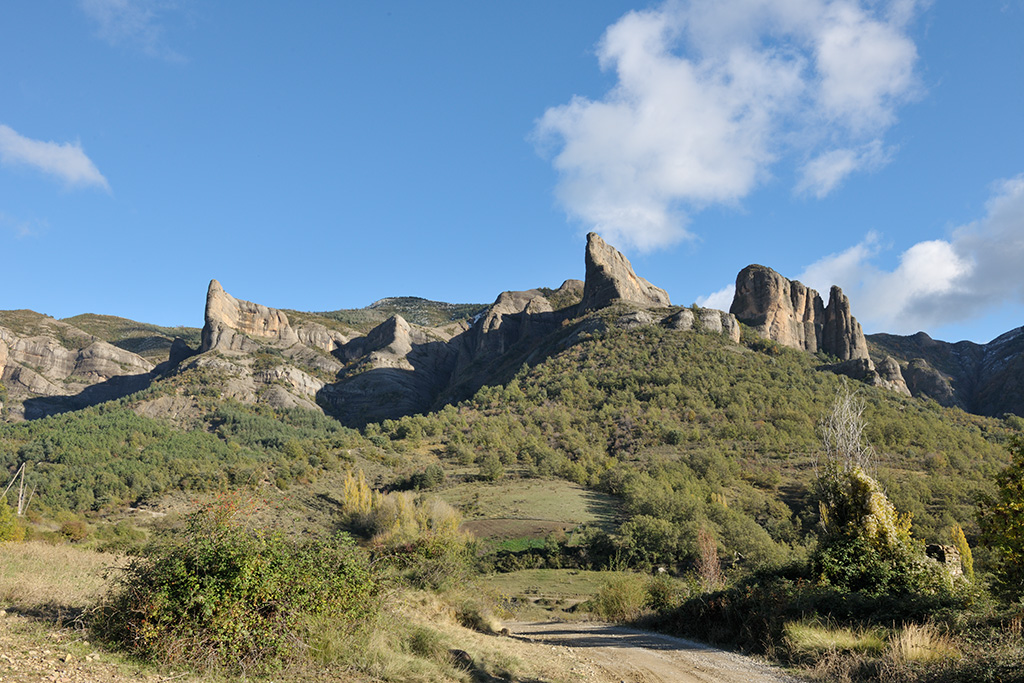
The detour I am forced to engage in is just as beautiful, offering another angle on the former glacial circus, this time under the sun, as the clouds finally cleared. Me, rocks, vultures and sheep. An ideal place to sleep under the stars, after three days trapped in a city !
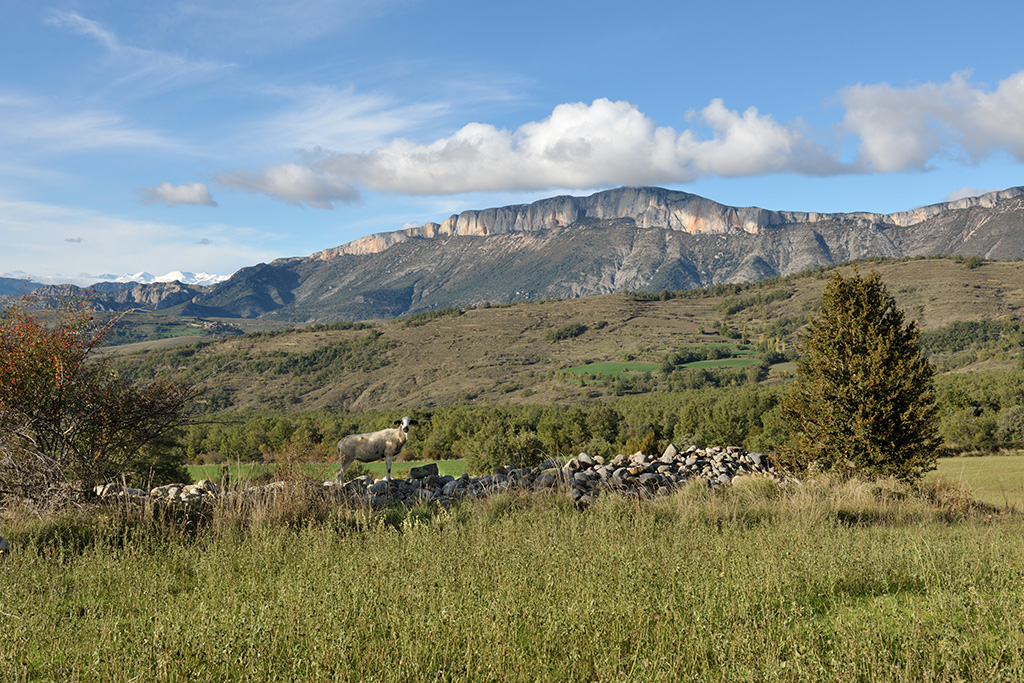
Good by Catalunya, it’s been beautiful !
Next, Aragon…
Make sure to check our dedicated guide for the Spanish Trail where you’ll find all the informations you’ll need to complete it on your own.
